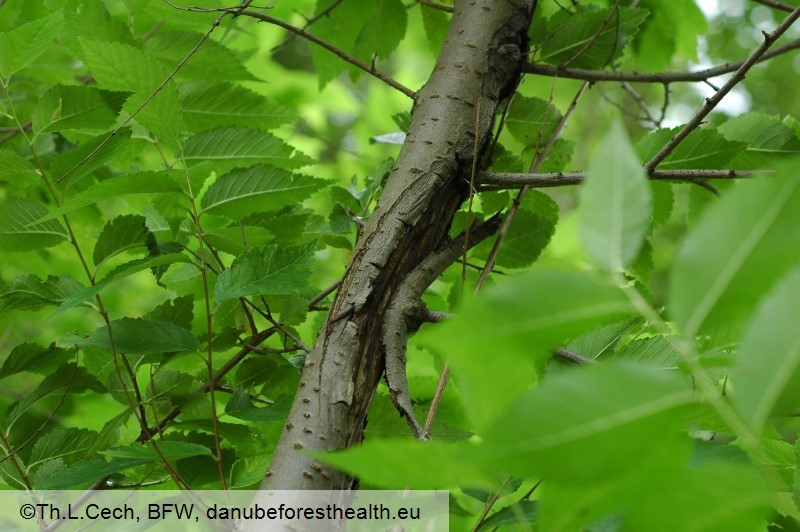Fungi
Plectophomella-cankers of elm
Plectophomella concentrica
Thomas Cech
|
|

Fig. 1. Plectophomella concentrica, canker on a twig of Ulmus
DETECTION PERIOD:
Whole season
DESCRIPTION:
Swollen cankers predominantly on one, but occasionally on two and three-years old shoots (fig.1); shoots infected in the first year usually die back during the following winter. These cankers usually heal and young shoots are growing from the area below the healed canker. However, healing may take several years to be completed. In the xyleme of the cankered area dark stripes similar to the ones caused by Ophiostoma novo-ulmi may appear. On the cankers, minute concentrically arranged black pustule-shaped fruiting bodies (stromata) are formed, the spores of which infect further shoots. Cutting into the pustules show several locules (visible by a hand-lens).
HABITAT:
Twigs of elms (Ulmus sp.); forests and urban sites.
STATUS:
In some European countries quite common.
IMPACT:
Rather of minor importance.
SIMILAR SPECIES:
Dieback and cankers on elm twigs can be a result of Dothiorella ulmi infection. If there are fruiting bodies present watch for their concentric arrangement around a lateral shoot or dead bud which is specific to Plectophomella concentrica!
|